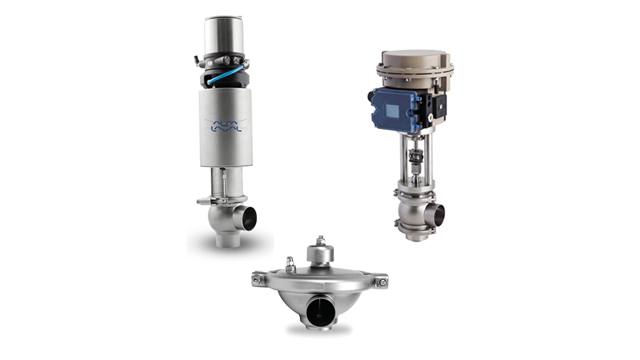How Control Valves Impact Power Performance in Industrial Settings
How Control Valves Impact Power Performance in Industrial Settings
Blog Article

Maximize Energy Cost Savings and Comfort With Advanced Structure Automation Controls
In the realm of modern-day architecture and facility management, the assimilation of advanced building automation manages stands as a pivotal improvement. By using the power of automation, structures can adapt, respond, and evolve in ways that were as soon as inconceivable.
Power Efficiency Benefits
Power effectiveness advantages can substantially minimize power consumption and functional prices in buildings. By executing energy-efficient techniques and innovations, building owners and operators can accomplish substantial savings while likewise adding to environmental sustainability. Among the key advantages of boosting power performance in buildings is the decrease of energy costs. Energy-efficient systems, such as sophisticated structure automation controls, can optimize making use of sources like home heating, air conditioning, and lights, bring about reduced energy expenditures in time.
Furthermore, boosted energy efficiency can extend the life expectancy of building devices and systems. By operating much more successfully, a/c systems, lighting fixture, and other structure elements experience less wear and tear, leading to decreased maintenance and replacement costs. Furthermore, energy-efficient buildings commonly regulate higher residential or commercial property worths and rental prices, supplying long-term financial benefits to proprietors.
Additionally, power performance can improve resident comfort and efficiency. Correctly controlled interior settings with optimum illumination and thermal conditions produce a more pleasurable and favorable office, causing improved employee fulfillment and efficiency. On the whole, the energy effectiveness benefits connected with innovative structure automation controls are complex, encompassing price savings, environmental stewardship, and owner wellness.
Enhanced Comfort Control
Enhancing comfort control in structure environments calls for an innovative integration of sophisticated automation systems for ideal occupant well-being. By utilizing innovative structure automation controls, facilities can customize the interior setting to fulfill the certain needs and preferences of residents. These systems make it possible for specific regulation of ventilation, illumination, and temperature level, developing a comfy and productive environment. Occupant complete satisfaction and productivity are carefully linked to thermal comfort, making it important to have systems in place that can adapt to altering conditions in real-time.
By integrating these advanced controls, structures can not just enhance comfort however additionally improve power effectiveness by maximizing system procedures based on real tenancy and use patterns. Ultimately, focusing on passenger convenience with innovative automation systems leads to an extra enjoyable and much healthier interior environment.
Functional Effectiveness Improvements

Moreover, the application of real-time tracking and analytics devices allows building operators to recognize energy inadequacies and functional abnormalities without delay. By continuously monitoring power use patterns and system performance metrics, changes can click to investigate be made in real-time to enhance energy intake and make certain peak functional performance. control valves. In addition, integrating demand response approaches right into structure automation controls can further boost functional effectiveness by dynamically readjusting power usage based upon grid conditions and pricing signals
Indoor Environment Optimization
Efficient indoor environment optimization is a fundamental element of structure automation controls, guaranteeing owners' convenience and wellness while maximizing power savings. By using sophisticated sensing units and controls, building automation systems can constantly change and check temperature, moisture levels, air high quality, and ventilation to develop an optimum indoor environment. Maintaining comfy and constant conditions not only improves passenger contentment but likewise improves efficiency and overall wellness.
Indoor environment optimization also plays an important role in energy performance. By fine-tuning air flow, home heating, and air conditioning systems based on real-time information and occupancy patterns, constructing automation controls can dramatically reduce power usage - control valves. For instance, carrying out methods such as demand-controlled air flow and thermal zoning can assist lessen energy waste while guaranteeing that each area of the building receives the required conditioning.

Sustainable Environment Production
Building automation controls not just maximize interior environment conditions for power performance and passenger convenience but additionally lay the structure for creating a sustainable atmosphere through critical management of systems and resources. By incorporating sophisticated building automation modern technologies, such as sensing units, actuators, and smart software program, facilities can change and keep track of power use in real-time to minimize waste and lower their carbon footprint. These systems enable anticipating maintenance, recognizing prospective problems before they intensify and optimizing devices performance to boost long life and performance.
In addition, sustainable setting production extends beyond power administration to encompass water conservation, waste decrease, and interior air quality improvement. Structure automation controls can control water use, detect leakages, and ensure correct waste disposal practices, adding to general sustainability efforts. In addition, by keeping track of and managing ventilation and purification systems, these technologies improve passenger health and productivity while lowering energy usage linked with heating and cooling procedures.
Conclusion
In conclusion, progressed building automation regulates offer substantial benefits in regards to energy cost savings, convenience control, functional effectiveness, interior climate optimization, and creating a lasting setting. By implementing these controls, structures can achieve optimum performance while lowering power intake and boosting owner convenience. It appears that the usage of innovative More Info automation technology is critical in enhancing structure efficiency and producing a more lasting future.
Energy efficiency advantages can like it considerably reduce power intake and operational expenses in buildings. In general, the energy effectiveness benefits connected with sophisticated structure automation controls are multifaceted, including expense savings, ecological stewardship, and resident wellness.
Furthermore, incorporating need action approaches right into building automation controls can additionally enhance functional efficiency by dynamically readjusting energy use based on grid problems and prices signals.
Building automation controls not just maximize interior climate conditions for power effectiveness and passenger convenience however additionally lay the structure for producing a lasting atmosphere via strategic management of systems and resources.In final thought, progressed building automation regulates deal substantial advantages in terms of energy cost savings, convenience control, operational performance, indoor environment optimization, and creating a lasting atmosphere.
Report this page